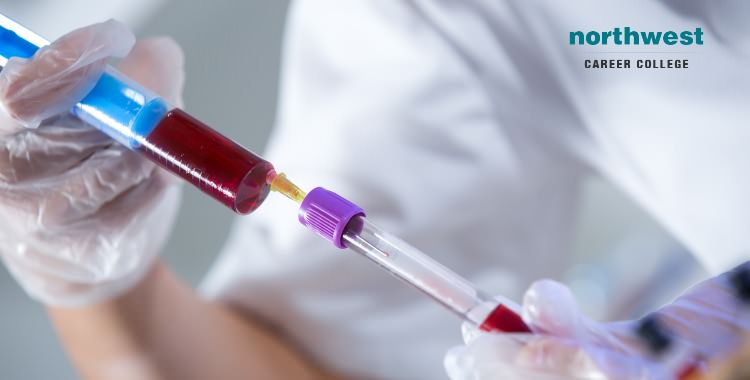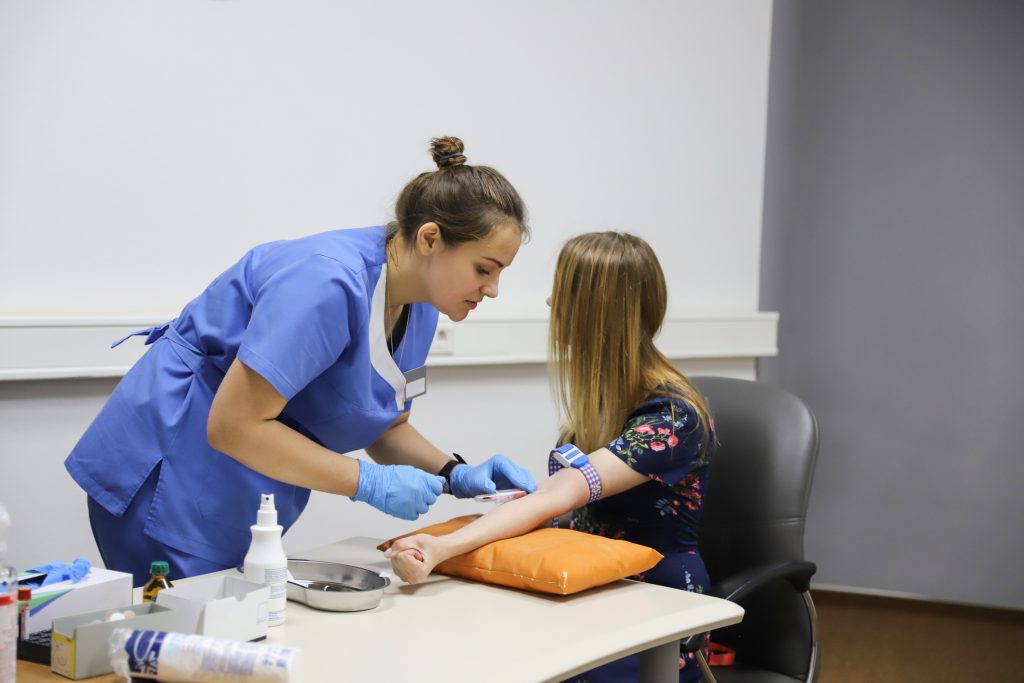Northeast Medical Institute - New Haven Campus Phlebotomy Course & Cna Class Things To Know Before You Buy
Table of ContentsThe Buzz on Northeast Medical Institute - New Haven Campus Phlebotomy Course & Cna ClassUnknown Facts About Northeast Medical Institute - New Haven Campus Phlebotomy Course & Cna ClassIndicators on Northeast Medical Institute - New Haven Campus Phlebotomy Course & Cna Class You Need To KnowWhat Does Northeast Medical Institute - New Haven Campus Phlebotomy Course & Cna Class Mean?Get This Report about Northeast Medical Institute - New Haven Campus Phlebotomy Course & Cna ClassSome Of Northeast Medical Institute - New Haven Campus Phlebotomy Course & Cna Class
The usage of such gadgets must be gone along with by various other infection avoidance and control practices, and training in their use. Not all safety gadgets are suitable to phlebotomy. Prior to picking a safety-engineered tool, customers must extensively explore readily available tools to determine their suitable use, compatibility with existing phlebotomy practices, and effectiveness in protecting team and patients (12, 33).For setups with reduced resources, cost is a driving variable in procurement of safety-engineered tools. Where safety-engineered tools are not offered, proficient usage of a needle and syringe is acceptable.
One of the crucial markers of high quality of care in phlebotomy is the involvement and teamwork of the person; this is mutually valuable to both the wellness worker and the client. Clear info either written or spoken should be readily available to each individual that undergoes phlebotomy. Annex F offers sample text for explaining the blood-sampling procedure to an individual. labelling); transportation problems; analysis of outcomes for professional monitoring. In an outpatient division or facility, give a dedicated phlebotomy cubicle containing: a clean surface with two chairs (one for the phlebotomist and the other for the individual); a hand laundry basin with soap, running water and paper towels; alcohol hand rub. In the blood-sampling room for an outpatient department or clinic, provide a comfortable reclining sofa with an arm remainder.
The Of Northeast Medical Institute - New Haven Campus Phlebotomy Course & Cna Class
Make certain that the signs for blood sampling are clearly specified, either in a composed protocol or in recorded instructions (e.g. in a research laboratory type). Whatsoever times, adhere to the techniques for infection prevention and control provided in Table 2.2. Infection avoidance and control practices. Accumulate all the devices required for the procedure and area it within safe and easy reach on a tray or trolley, guaranteeing that all the things are clearly noticeable.
Where the individual is adult and mindful, adhere to the steps detailed below. Present on your own to the client, and ask the individual to specify their complete name. Check that the lab kind matches the patient's identity (i.e. match the individual's information with the lab form, to make certain accurate identification). Ask whether the patent has allergies, anxieties or has ever fainted during previous injections or blood draws.
Make the individual comfortable in a supine position (when possible). Place a clean paper or towel under the client's arm. Talk about the examination to be performed (see Annex F) and get spoken approval. The client has a right to decline an examination any time prior to the blood tasting, so it is essential to ensure that the patient has actually recognized the treatment.
All About Northeast Medical Institute - New Haven Campus Phlebotomy Course & Cna Class
Expand the patient's arm and check the antecubital fossa or forearm. Locate a capillary of a good size that is noticeable, straight and clear. The layout in Area 2.3, shows usual settings of the vessels, however numerous variants are possible. The median cubital capillary exists between muscular tissues and is normally one of the most very easy to puncture.
DO NOT put the needle where blood vessels are drawing away, due to the fact that this increases the chance of a haematoma. The blood vessel ought to show up without using the tourniquet. Finding the capillary will help in figuring out the proper dimension of needle. Apply the tourniquet regarding 45 finger sizes over the venepuncture site and re-examine the capillary.
Samplings from main lines bring a threat of contamination or incorrect laboratory examination results. It is appropriate, yet not suitable, to draw blood samplings when very first introducing an in-dwelling venous device, before connecting the cannula to the intravenous liquids.
Rumored Buzz on Northeast Medical Institute - New Haven Campus Phlebotomy Course & Cna Class
Failure to enable sufficient contact time enhances the danger of contamination. DO NOT touch the cleaned website; in specific, DO NOT position a finger over the blood vessel to direct the shaft of the exposed needle.
Ask the client to develop a hand so the veins are more famous. Enter the blood vessel promptly at a 30 level angle or much less, and continue to introduce the needle along the capillary at the most convenient angle of access - Phlebotomy Classes. As soon as enough blood has been collected, launch the tourniquet prior to withdrawing the needle
Northeast Medical Institute - New Haven Campus Phlebotomy Course & Cna Class Can Be Fun For Anyone
Withdraw the needle delicately and use gentle stress to the site with More Help a tidy gauze or dry cotton-wool round. Ask the individual to hold the gauze or cotton wool in area, with the arm expanded and elevated. Ask the patient NOT to flex the arm, because doing so creates a haematoma.

Northeast Medical Institute - New Haven Campus Phlebotomy Course & Cna Class Things To Know Before You Get This
Where possible, keep the tubes in a rack and relocate the rack towards you - https://issuu.com/northeastmed#google_vignette. If the example tube does not have a rubber stopper, infuse exceptionally gradually right into the tube as decreasing the pressure and rate utilized to transfer the sampling reduces the threat of haemolysis.
